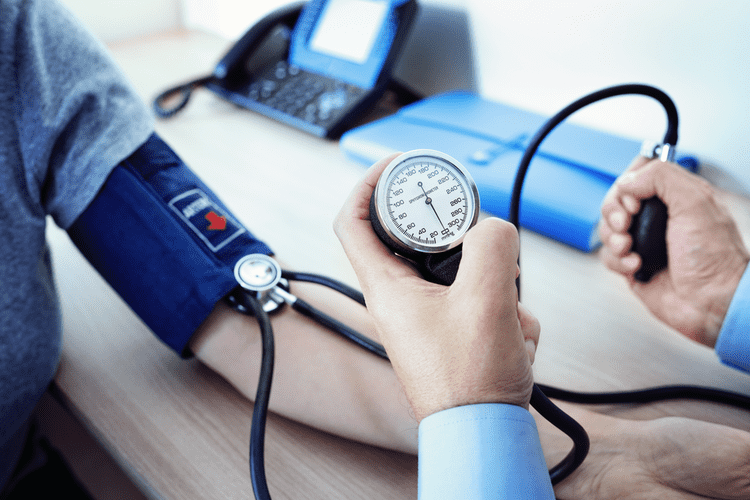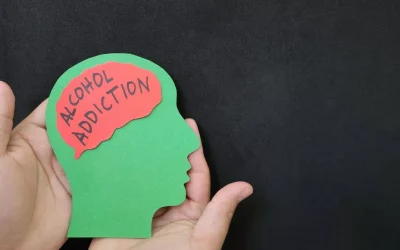Studies of interventions to prevent the recurrence of suicidal behavior that are appropriate for different age and cultural groups are especially needed. Excluding substance-induced psychotic disorders, the lifetime rate of substance use disorders in people with psychotic disorders is 62.5%. Alcoholism may cause acute paranoid-hallucinatory psychosis and, although prognosis is good, 10–20% of patients with alcohol psychosis will develop a chronic schizophrenia-like syndrome [243,244]. Strategies for patients with psychoses alcohol detox diet eating healthy during alcohol withdrawal must take into account the fact that alcohol dependence and psychosis, which alone are risk factors for medical problems, multiply the risk when comorbid [245]. Co-use of alcohol and opioids can significantly increase the risk of death from overdoses due to respiratory depression [153], and in fact, many OUD-related deaths involve alcohol use [154]. There are a number of predisposing risk factors that contribute to both AUD and OUD, and some pharmacological treatments are indicated for both AUD and OUD (e.g., naltrexone).
Get help for alcoholism today.
- Additional meta-analytic research similarly suggests lower performance of SSRIs relative to tricyclics in comorbid MDD and AUD/SUD [119, 125], but results should be interpreted cautiously given the potentially mediating roles of study design and sample selection.
- Also, although rates of suicide and prevalence of AUD remain higher in men, they have increased more among women in recent decades.
- Dr Mishra is the Chief Medical Officer of the Texas Healthcare and Diagnostic Center, and a medical reviewer for Ohio Recovery Center, where he works to provide accurate, authoritative information to those seeking help for substance abuse and behavioral health issues.
- Whether you’re seeking treatment for yourself or you’re concerned about a loved one, know that there are many ways to help prevent suicide and stop alcohol misuse.
- Environmental stressors act on a genetically-determined and environmentally-modulated physical structure that in turn impacts psychological well-being and may cause a psychiatric illness that affects the person’s inner world and paves the way for suicide.
Norstrom [94] reported that the estimated alcohol effect was stronger in Sweden (13% per liter) than in France (3% per liter). McGirr et al. [252] reported that, compared to other suicides, schizophrenic and schizoaffective suicides showed comparably elevated levels of impulsive aggressive traits. Evren and Evren [253] found that, among schizophrenic cognitive behavioral therapy for relapse prevention patients, young male patients who have antisocial personality properties and depressive symptoms should be considered at higher risk for suicide. Alcohol misuse is robustly linked to heightened risk for suicidal ideation, attempts, and deaths in youths and adults [10, 15–17], a phenomenon not accounted for by comorbid psychiatric disorders [18].
Suicidal Behavior and Alcohol Abuse
Altered glutamatergic receptors in the brains of people who died from suicide comprise reduced NMDA receptors [170] and increased caudate metabotropic receptors [171]. These findings are interesting in pointing to alcohol-suicide commonalities in neurochemical alterations but, unfortunately, these post-mortem findings in the brains of suicides are only partially matched by alterations found in brains of non-suicidal people with chronic alcoholism. Notably, GABAA receptors were reduced [172–174], but the subunit compositions only partly overlap with those found in suicides. Recent findings from the National Epidemiological Survey on Alcohol and Related Conditions (NESARC) [32] indicate that the 12-month prevalence of DSM-IV-TR alcohol dependence in the adult population in USA is 3.8% and that of alcohol abuse 4.7% [33]. This means that, every year, 8.5% of the adult US population in USA has an alcohol use disorder [33].
3. Suicidal Behavior and Alcohol Abuse in Affective Bonds and Social Relationships
Aharonovich et al. [258] found that all subtypes of depression increased the risk for making a suicide attempt in patients with substance dependence abuse. Major depression occurring before the patient became substance dependent predicted the severity of suicidal intent, while major depression during abstinence predicted the number of attempts. A variety of longer-term psychotherapies for AUD may be relevant in populations with co-occurring suicidality. Motivational enhancement therapy (MET) is a time-limited intervention that utilizes motivational interviewing (MI) principles to resolve ambivalence about treatment engagement and clarify goals relating to alcohol use [131, 132]. Cognitive behavioral therapy (CBT) for co-occurring mood and AUD focuses on dysfunctional, distorted, or self-defeating schemas or beliefs that may be contributing, jointly or severally, to depressed mood, suicidality, and alcohol misuse [133].
1. Prevention of Suicide by Focusing on the Alcohol Abuse Component
Whereas suicidal behavior in youngsters is often impulsive and communicative, in older people it is often long-planned and involves highly lethal methods. Its lethality increases also as a result of the structural frailty and loneliness that are often present in the elderly. Alcohol misuse is an important risk factor for suicide in elderly people [208]. Psychiatric disorders, especially depression, are common in suicides in Western [208], as well as in Eastern countries [209]. Depression on the other hand, is frequently comorbid with alcohol abuse/dependence in the aged [210–212]. Singh et al. [24] reviewed autopsy and field reports for all paediatric suicide cases referred to the New Mexico Office of the Medical Investigator from 1979 to 2005.
These disorders also include the typical microzooptic hallucinations, delirium tremens and Korsakoff’s syndrome, which may occur in the alcohol withdrawal syndrome. Dr Mishra is the Chief Medical Officer of the Texas Healthcare and Diagnostic Center, and a medical reviewer for Ohio Recovery Center, where he works to provide accurate, authoritative information to those seeking help for ecstasy detox symptoms timeline medications and treatment substance abuse and behavioral health issues. Brief motivational enhancement techniques to increase patients’ willingness to pursue treatment and overcome obstacles may also be an effective engagement approach. Motivational interviewing is focused on helping people work through their ambivalence about changing their behavior and explores patients’ concerns and beliefs about change.
Given the high prevalence of alcohol/opioid use alongside escalating rates of suicide, there is a compelling need for attention to their cooccurrence. Suicide claims more than 800,000 lives each year worldwide and is the second-leading cause of death among people ages 15 to 29.1 For every suicide, at least 20 nonlethal suicide attempts have occurred, primarily by attempted overdose. These attempts are a leading cause of hospitalizations from injury and a potent risk factor for eventual suicide.
Importantly, rising rates of alcohol misuse are accompanied by a 35% increase in alcohol-related suicide deaths [23]. Alcohol and opioid use are the two most common substances implicated in suicidal behavior [14•]. This review briefly surveys the literature on the overlap of these disorders, highlighting the complex and multidirectional relationships between them. A meaningful understanding of the different roles that alcohol and opioid use can play in suicidal behavior, however, will require continued study of their shared risk factors, mechanisms, and interventions. For example, further empirical research is necessary to differentiate the acute effects of alcohol and opioid intake on suicidality, separably from chronic or dependent use. Additionally, the gaps in intervention research on co-occurring suicidality and AUD/OUD are substantial, and pharmacological studies do not frequently account for the effects on suicidality, specifically, in addition to mood improvements in mood, in alcohol/opioid users.
AUA is a potent proximal risk factor for suicidal behavior, and the risk increases with the amount of alcohol consumed, consistent with a dose-response relationship. Research indicates that AUA increases risk for suicidal behavior by lowering inhibition and promoting suicidal thoughts. There is support for policies that serve to reduce alcohol availability in populations with high rates of AUD and suicide, that promote AUD treatment, and that defer suicide risk assessments in intoxicated patients to allow the blood alcohol concentration to decrease. The evidence about the consequences of antidepressant treatments in subjects with comorbid alcohol dependence and mood disorders was unclear and not well documented. Cornelius et al. [240] found that the long-term clinical course for major depression in the comorbid adolescent population is surprisingly poor also including a higher mortality from suicide and higher treatment costs [241]. The poor response to antidepressant treatment was found to be an independent risk factor for suicide attempts in 1,863 persons included in the WHO/ISBRA study; 292 of these patients had both a history of depressive symptoms and alcohol dependence or abuse [242].


